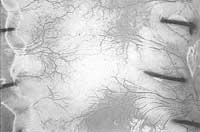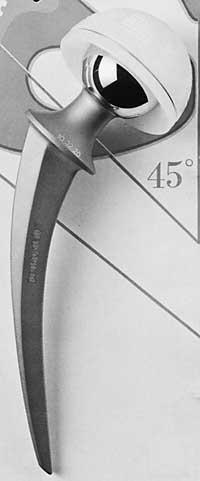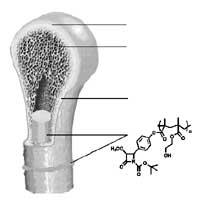Search for new cements for prosthesis fixing
2000/05/01 Goñi, Isabel | Gurrutxaga, Marilo Iturria: Elhuyar aldizkaria
The human being lives more and more and, therefore, the number of age-related diseases is also greater. One of them is to break the hip. Young people can also have this type of accident problems. The surgical solution consists of placing a prosthesis in the femur.
According to the possible cases, the placement of these prostheses has been very varied. Today, in the case of older people, the best option is to combine metallic prosthesis to bone with acrylic cement. The use of these cements has a 40 year experience and has shown its high efficiency. However, they usually have small problems that can be solved.
It can improve the consistency and other characteristics of the material that composes the cement to improve its adaptation to the movement. Moreover, to adapt as much as possible to the bone wall, it is convenient to have a cement that absorbs the physiological fluid. In the laboratory we look for suitable materials with these characteristics.
The cement used in the operating room consists of two components that will be mixed in it. An opaque substance is added to X-rays, one of them. In this way, in subsequent medical reviews, the cement can be followed by X-rays. However, sometimes, the presence of this substance could reduce the durability of the material. Therefore, one of our objectives is to seek a substitute for this substance, the synthesis of cement which is actually radiopaque. In this way, we should not add any substance that affects the mechanical characteristics.
Cement is a polymer that is synthesized in the operating room once both components have been mixed. Therefore, its physical characteristics depend on the nature of the components (monomers). In our laboratory we are investigating monomers with radioopacity. In the experiments the same reaction (mixture) is performed as in the operating room. Mechanical and chemical tests of the cements obtained are performed, since the cements for prosthesis must comply with a medical-surgical regulation.

Gai honi buruzko eduki gehiago
Elhuyarrek garatutako teknologia





